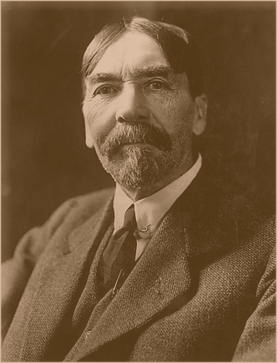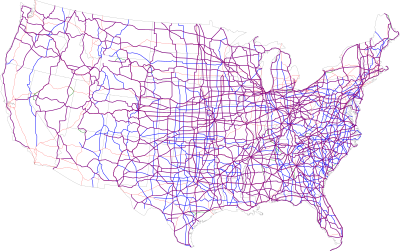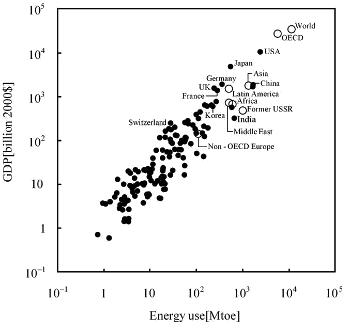The Physics of Inequality
May 11, 2017
Economics has been known as "
the dismal science" since this phrase was used by
Thomas Carlyle (1795-1881) in an
anonymous 1849 essay. As he wrote,
"Not a gay science... no, a dreary, desolate and, indeed, quite abject and distressing one; what we might call, by way of eminence, the dismal science."
Carlyle thought that Economics was dismal, since it reduced the essential
principle of the world to
supply and demand, making
laissez-faire the proper way of
governance. Laissez-faire governance, of course, means no governance at all. Thus, Economics is not called dismal, as many students might think, because it's a
science that was always overloaded with
mathematical equations.
I studied introductory Economics from the preeminent
textbook of
my era,
Economics, by
Paul Samuelson (1915-2009). Samuelson went on to become the first recipient of the
Nobel Memorial Prize in Economic Sciences in 1970. This prize was a late addition to the
Nobel Prizes established by
Alfred Nobel.
As I remember, the mid-1960s edition of Samuelson's book had a single equation. This might be the earliest example of an
author heeding the principle that every equation in a book reduces its readership by half. This rule is mentioned by
Stephen Hawking in the acknowledgements section of his 1988 book,
A Brief History of Time, that contained a single equation (
E = mc2).
In its early days, Economics was not mathematical, and it was mostly
philosophical. An example of this can be seen in the work of
Thorstein Veblen (a.k.a., Torsten Veblen), an
economist who flourished in the late
nineteenth, and early
twentieth,
century. Veblen is best known for his 1899 book,
The Theory of the Leisure Class,[1] in which he coined the term,
conspicuous consumption.

Thorstein (Torsten) Veblen (1857-1929).
Veblen's "The Theory of the Leisure Class" introduced the term, "conspicuous consumption."
(Wikimedia Commons image, modified for artistic effect)
Conspicuous consumption is the purchase of
lavishly expensive, or
ephemeral and impractical,
goods and
services simply as a way of displaying
income or
wealth. A quick reading of
Google News will show that conspicuous consumption is as alive, today, as it was more than a century ago. Veblen's 184 page book has no equations, and a quick perusal of some
recent papers in Economics on arXiv will show that Economics has changed quite a bit since Veblen's time.

An equation pulled from a recent paper on Economics at arXiv.[2]
They say that
money is
power. The
physical definition of
power is the
rate of doing
work; that is, it's the amount of
energy consumed per unit
time. Since
time is money, we arrive at the dubious equation that energy
E is proportional to money squared,
E = k($)2
All this is
tongue-in-cheek, although some
business guru could likely sell thousands of copies of a book based on this idea. However, it does introduce the intimate connection between wealth and energy. The physical basis of the connection between a
country's economic activity and energy consumption has been analyzed in a recent paper in the
Journal of Applied Physics.[3-5] The paper reveals, also, the underlying principles that foster
wealth inequality in the world.
Any casual
observation will prove that
income inequality exists, but a more pressing question is why it seems to increase and it's so difficult to erase.[3-4]
Adrian Bejan, a
professor of
mechanical engineering at
Duke University, and
Marcelo Errera, a professor of
environmental engineering at the
Federal University of Paraná, Brazil, write that such a
hierarchical distribution of wealth happens naturally; and, since hierarchy is persistent and unavoidable, it's difficult to erase.[3]
The essential idea is that wealth, like many physical quantities,
flows, and it's addressable by aspects of
fluid mechanics. This is an application of Bejan's Constructal Law that I discussed in a
previous article (Scaling Laws, March 31, 2016). His law, simply stated, is that "For a
finite-size system to persist in time, it must
evolve in such a way that it provides easier access to the imposed
currents that flow through it."[6] Flowing system will trend toward an
architecture that allows for an easier flow.

Go with the flow...
Map of United States highways.
(Via Wikimedia Commons.)
It appears to be a fundamental
principle of physics that flow systems evolve over time to increase flow access. That's why so many
branching,
tree-shaped flow patterns appear in
nature, with examples in
river basins,
neural networks,
lightning bolts, the
human vascular system, and the
movement of freight.[4-5] Says Bejan, "
Social organization is more complicated, but it's all
physics."[4] As Bejan explains,
"From physics, it's actually easy... You may have noticed that annual wealth, a.k.a. gross domestic product (GDP), is essentially proportional to the useful energy or 'work and movement' generated by a group or territory, so you can think of wealth as movement. Also recognize movement (wealth) as inequality that is hierarchical."[4]
As shown in the figure, the Gross Domestic Product of a country is proportional to the amount of
fuel consumed annually, which is a
correlate of physical movement, such as fueling the human body with
food, or powering
vehicles.[3,5] At this fundamental level, there's a link between economics and physics; and, as Bejan states, "If movement is hierarchical, naturally, then so is the wealth.[5]

Graph of gross domestic product as a function of annual fuel consumption.
More economic activity is correlated with greater fuel consumption.
(American Institute of Physics image by Bejan and Errera.)
In the early days of human society, everything was local, and everyone was equally wealthy (or equally
poor). A greater
connectivity in society led to wealth inequality, a scenario that's exacerbated by today's
globalization.[5] This creates a greater inequality in wealth distribution, a fact that's explained in Bejan's
model.[5] Such inequality had an early origin. As Bejan states, "Relatively modest
complexity is required for the nonuniformity in the distribution of movement (wealth) to be evident."[4]
Eradication of wealth inequality seems as if it will be a losing battle. When
laws are enacted to favor more equality, inequality emerges again in other pathways. In an
historical example, Bejan cites the
Bolshevik Revolution.
"Indeed, some governments have tried to impose equality overnight, leading to tragic results... Just look at the Bolshevik Revolution. Within days of trying to install universal equality, there were already government insiders and party leaders who had enormous power and wealth. Today in Russia, oligarchs have the wealth. Physics always wins."[5]
This research was supported by the
National Science Foundation.[5]
References:
- Thorstein Veblen, "The Theory of the Leisure Class," 1.4 MB PDF File, via Law in Contemporary Society Web Site, Columbia Law School.
- Anuj Bhowmik and Jiling Cao, "Ex-post core, fine core and rational expectations equilibrium allocations," arXiv, March 26, 2017.
- Adrian Bejan and Marcelo R. Errera, "The physics basis of inequality in wealth and movement," Journal of Applied Physics, vol. 121, no. 12 (March 28, 2017), Article No. 124903, DOI: 10.1063/1.4977962.
- Physics can predict wealth inequality, American Institute of Physics Press Release, March 28, 2017.
- The physics of wealth inequality, Duke University Press Release, March 28, 2017.
- Adrian Bejan, Constructal Law Web Site at Duke University.
Permanent Link to this article
Linked Keywords: Economics; the dismal science; Thomas Carlyle (1795-1881); anonymity; anonymous; Discourse; 1849 essay; principle; supply and demand; laissez-faire; governance; science; mathematics; mathematical; equation; textbook; baby boomer; era; Economics (textbook); Paul Samuelson (1915-2009); Nobel Memorial Prize in Economic Sciences; Nobel Prize; Alfred Nobel; author; Stephen Hawking; A Brief History of Time; mass-energy equivalence; E = mc2; philosophy; philosophical; Thorstein Veblen; economist; 19th century; 20th century; The Theory of the Leisure Class; conspicuous consumption; Thorstein (Torsten) Veblen (1857-1929); Wikimedia Commons; cost; lavishly expensive; ephemerality; ephemeral; goods; services; income; wealth; Google News; recent papers in Economics on arXiv; money; power (social and political); physics; physical; power (physics); rate; work; energy; time; opportunity cost; time is money; tongue-in-cheek; business guru; country; Journal of Applied Physics; economic inequality; wealth inequality; observation; Adrian Bejan; professor; mechanical engineering; Duke University; Marcelo Errera; environmental engineering; Federal University of Paraná, Brazil; hierarchy; hierarchical; fluid dynamics; flow; fluid mechanics; finite-size; evolution; evolve; current; structure; architecture; United States; highway; physical law; principle of physics; branch; branching; tree; tree-shaped; nature; drainage basin; river basin; biological neural network; lightning discharge; lightning bolt; circulatory system; human vascular system; freight transport; movement of freight; society; social organization; gross domestic product; proportionality; proportional; fuel; correlation; correlate; food; vehicle; function; American Institute of Physics; poverty; poor; connectivity; globalization; mathematical model; complexity; law; history; historical; October Revolution; Bolshevik Revolution; Russia; Russian oligarch; National Science Foundation.